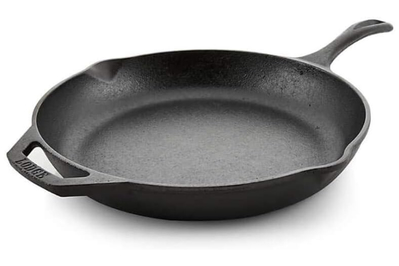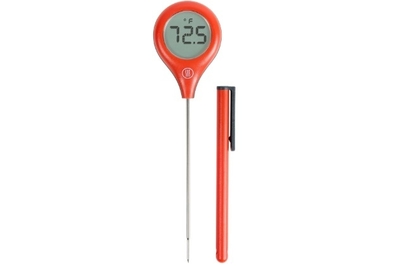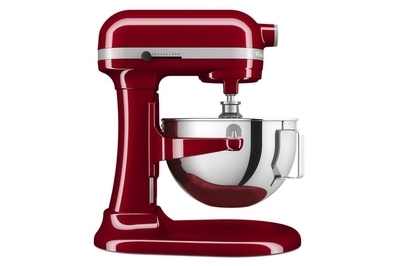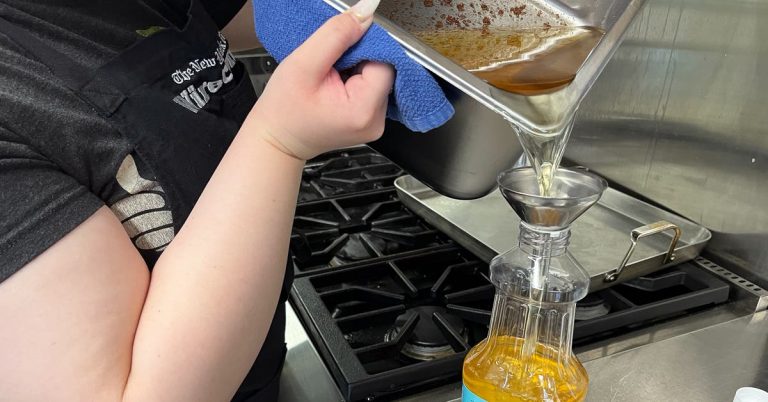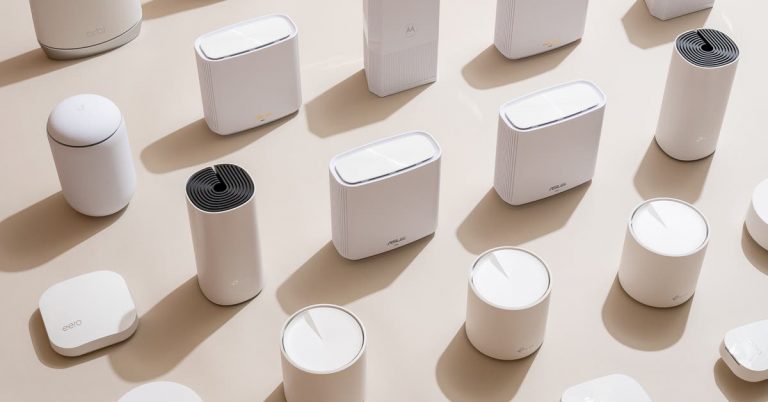Firefighters Know How to Cook for a Crowd. Here’s the Kitchen Gear They Swear By.

To observe the inner workings of a firehouse kitchen, I visited the Aurora Fire Department, where I spoke with Harr and Kevin Albert, two firefighters responsible for most of the meals at the AFD. I watched them make dinner for the crew in the bustling commercial-grade kitchen and then sat with them around the table once they called, “Chow’s up!”
One thing was immediately clear: When you’re cooking several meals a day for a large group, you need tools that can stand up to constant wear and tear. In the Aurora firehouse kitchen, there’s nothing quite as instrumental as a cast iron skillet. “There’s not a day they’re not used,” Albert said of the AFD’s fleet of Lodge cast iron skillets, which also happen to be a top pick in our guide.

Cast iron skillets are workhorses and can be used to cook just about anything, including searing steaks, frying eggs, roasting vegetables, and even baking cornbread or cakes. And, as long as they’re cared for properly, they can last a lifetime.
And few kitchen tools are as emblematic of that tradition than the cast iron pans that have been used by generations of firefighters. “I don’t even know how old they are,” McGraw said of the cast iron skillets he uses in the Richardson firehouse kitchen. “These same pans were being used 70, 80 years ago. And that’s not even specific to my firehouse — you go to any firehouse in the country, and they’re gonna have the same cast iron pans from when the station was originally [opened]. The fire service is very big on tradition.”
But cast iron isn’t only for skillets. “Dutch ovens are big here,” Harr said, not only because they’re versatile enough to cook a variety of meals, but they’re also roomy enough for large-batch cooking. On the night I visited the AFD, Harr used the kitchen’s Lodge 6-Quart Enameled Cast Iron Dutch Oven to prepare braised short ribs, moving the Dutch oven from the stovetop to the oven to finish cooking while we talked.
The Lodge 6-quart Dutch oven, the top pick in our guide to the best Dutch ovens, has short sides and a wide base, which our experts say allow steam to escape more easily than deeper-walled pots. This gives you a better sear on meat and helps to concentrate flavors during cooking.
Of all the tools in the kitchen, Albert considers a reliable instant-read thermometer the most indispensable. “It’s such a game changer,” he said. “It’s like looking inside the meat.”
The Aurora firehouse kitchen has a ThermoPro TP15H on hand, but Albert says he prefers to use the ThermoWorks ThermoPop 2 when he’s cooking at home. The ThermoPop 2 (a Wirecutter pick) provides fast, accurate temperature readings, displayed on an easy-to-read, backlit screen. According to our guide, it’s also completely waterproof and able to withstand kitchen sprays and splashes.
A good chef’s knife is essential in any kitchen, and keeping it in good shape is a challenge in a firehouse. “Guys will use knives then throw them in the dishwasher, and that’s how they get dull,” McGraw explained, which he said can be frustrating. (Anyone who’s been on a group trip probably knows the feeling.)
To get around this, the RFD has two separate sets of knives. “We have station knives, and then we have shift knives,” McGraw said. “The station knives are the ones that get thrown in the drawers, and, you know, they’re all beat to hell. So my crew, we all threw in together and bought a set of knives for us that we keep in our food locker.”
Before the crew bought a new set, one of McGraw’s co-workers brought in his Topfeel 3-Piece Butcher Knife Set from home to tide them over. They liked using the knives so much that they decided to buy a set of their own to keep in the kitchen. They’ve used the knife set now for a year, and he says that they’ve held up great despite being relatively inexpensive.
The knives at the AFD have also seen better days. “We have horrible knives. Nobody knows how to take care of them,” said Harr. Albert added that hiding high-quality knives is a common practice across firehouses. In a past role at another station, he said he kept his Wüsthof Classic Ikon Chef’s Knife squirreled away in his locker to keep it in tip-top shape.
“A lot of our stuff gets used so much that we get the commercial-grade stuff,” McGraw said, adding that his firehouse usually procures their wares from restaurant supply stores. “Most of our cutting boards are the big, heavy-duty plastic cutting boards that you would see inside of a restaurant.”
Plastic cutting boards are easier to clean and maintain than wooden boards, which make them the go-to in fast-paced firehouse kitchens. McGraw says the Choice White Polyethylene Cutting Board, a sturdy option sold by restaurant supply stores, is warp- and crack-resistant and can withstand heavy use. Plus, it’s roomy enough to accommodate the volume of food prep necessary for feeding the Richardson firehouse crew.
Harr learned to cook while on the job. When he joined the fire service in 1996, he had never cooked a meal before. On his very first shift, he found himself in the kitchen preparing dinner for eight people. Using canned vegetables and other prepackaged ingredients, he nervously threw together an enchilada casserole. “Was it edible? Yes,” Harr said, but it wasn’t necessarily good. “I’m mortified — we would never make that today.”
Almost three decades later, Harr has moved away from the bland firehouse staples that he used to keep on rotation — like boiled meat and potatoes and casseroles made with canned soups — opting for more-creative, flavorful meals made with fresh ingredients that take more time, effort, and a few extra kitchen appliances to pull off.
Though not an essential for the firehouse cooks I spoke with, a stand mixer is nice to have when they’re planning to make something more adventurous.
On the night I visited the AFD, they used a KitchenAid 5.5 Quart Bowl-Lift Stand Mixer to whip together creamy mashed potatoes (it’s a recommendation in our guide to stand mixers). In the past, they’ve used the mixer to make fresh pasta and homemade bread.

Harr has found that a reliable rice cooker comes in handy when cooking for a crowd, too. Instead of tending to a boiling pot while juggling a number of other tasks, he can set it and forget it until it’s time to eat.
When preparing big batches of rice, the Aurora firehouse cooks use a Zojirushi Neuro Fuzzy Rice Cooker & Warmer, the top pick in our rice cooker guide. Though it’s on the pricier side, Harr says the Nuero Fuzzy Rice Cooker is worth the cost. “It’s so consistent,” he said, adding that it makes the exact same rice every time. And, if cared for correctly, the machine can last years. “My mom has had hers for … I don’t even know how long!”

“In our line of work, it’s stressful. We see a lot of bad things,” McGraw said. Gathering around the dinner table offers the crew a chance to decompress and connect. “It makes it that much better when it’s a good meal that everyone enjoys.”
Sometimes, though, dinner can be interrupted by an emergency call. “That’s the hardest thing” about cooking family dinner, Harr said. “We try to make really good meals and we get interrupted.” When a call comes through, someone pushes an emergency button that cuts the power to the kitchen, which safely brings the cooking process to a standstill while they respond. On those nights, “we eat a lot of cold food,” Harr said.

Because they’re always cooking for a crowd, the firehouse cooks usually have leftovers to pack up after every meal. “A lot of the single guys will take the leftovers home,” Harr said. “And if it’s something that I made that I like, then maybe I’ll take it home.” To store all that extra food, the crew relies on durable Pyrex glass containers that can handle just about anything.
Firehouse kitchens run on teamwork, tradition, and the kind of cooking that brings people together. No matter how many mouths they’re feeding, these firefighters rely on tools that are tough enough to handle daily use and dependable enough to keep the crew well fed. And while their meals might occasionally go cold, the ritual of cooking and eating together always makes the effort worth it.
This article was edited by Megan Beauchamp and Maxine Builder.

